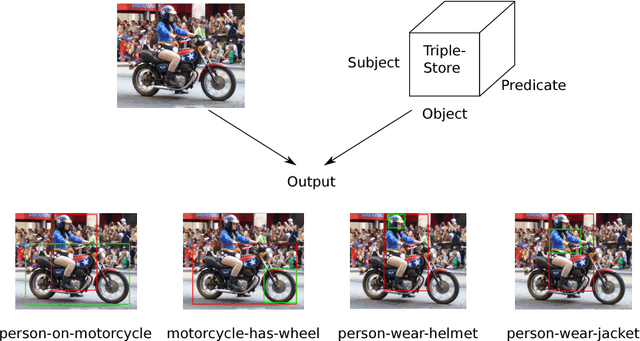Improving Visual Relationship Detection using Semantic Modeling of Scene Descriptions
Paper and Code
Sep 01, 2018



Structured scene descriptions of images are useful for the automatic processing and querying of large image databases. We show how the combination of a semantic and a visual statistical model can improve on the task of mapping images to their associated scene description. In this paper we consider scene descriptions which are represented as a set of triples (subject, predicate, object), where each triple consists of a pair of visual objects, which appear in the image, and the relationship between them (e.g. man-riding-elephant, man-wearing-hat). We combine a standard visual model for object detection, based on convolutional neural networks, with a latent variable model for link prediction. We apply multiple state-of-the-art link prediction methods and compare their capability for visual relationship detection. One of the main advantages of link prediction methods is that they can also generalize to triples, which have never been observed in the training data. Our experimental results on the recently published Stanford Visual Relationship dataset, a challenging real world dataset, show that the integration of a semantic model using link prediction methods can significantly improve the results for visual relationship detection. Our combined approach achieves superior performance compared to the state-of-the-art method from the Stanford computer vision group.
 Add to Chrome
Add to Chrome Add to Firefox
Add to Firefox Add to Edge
Add to Edge